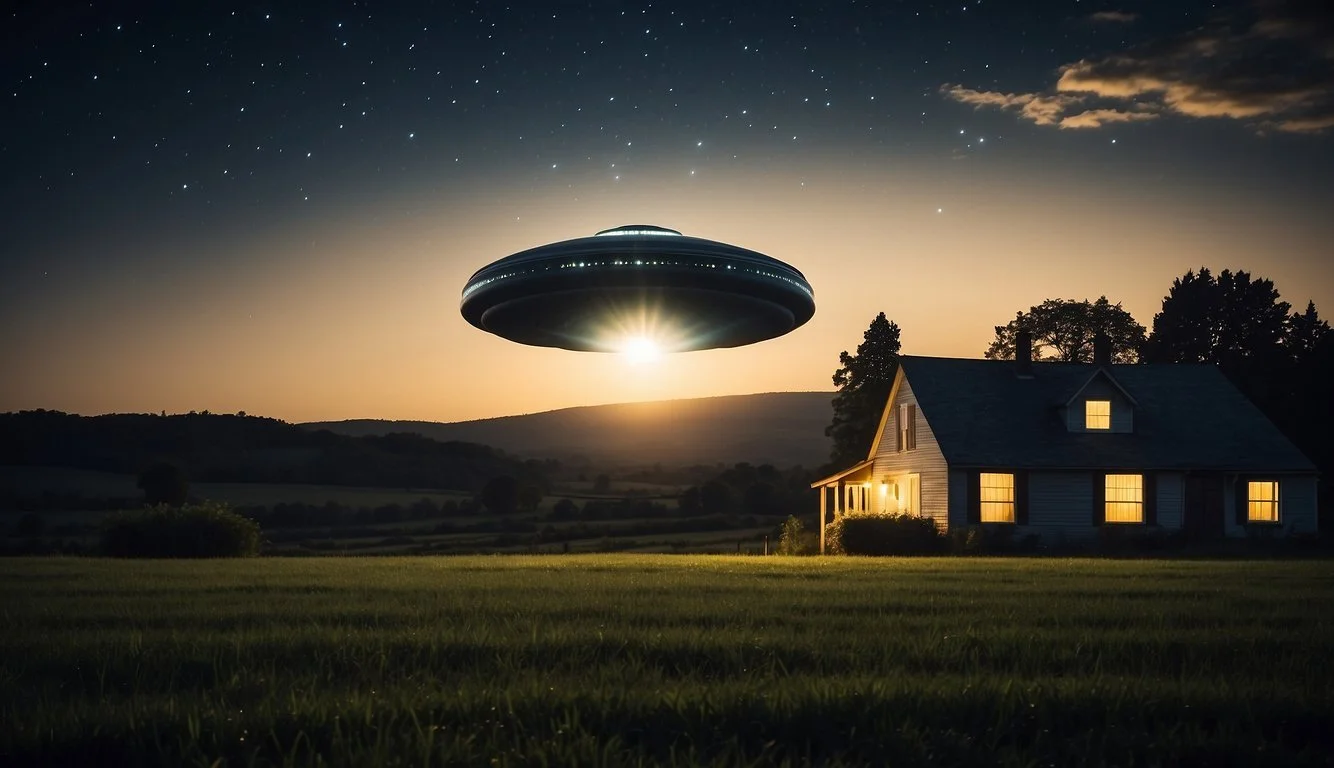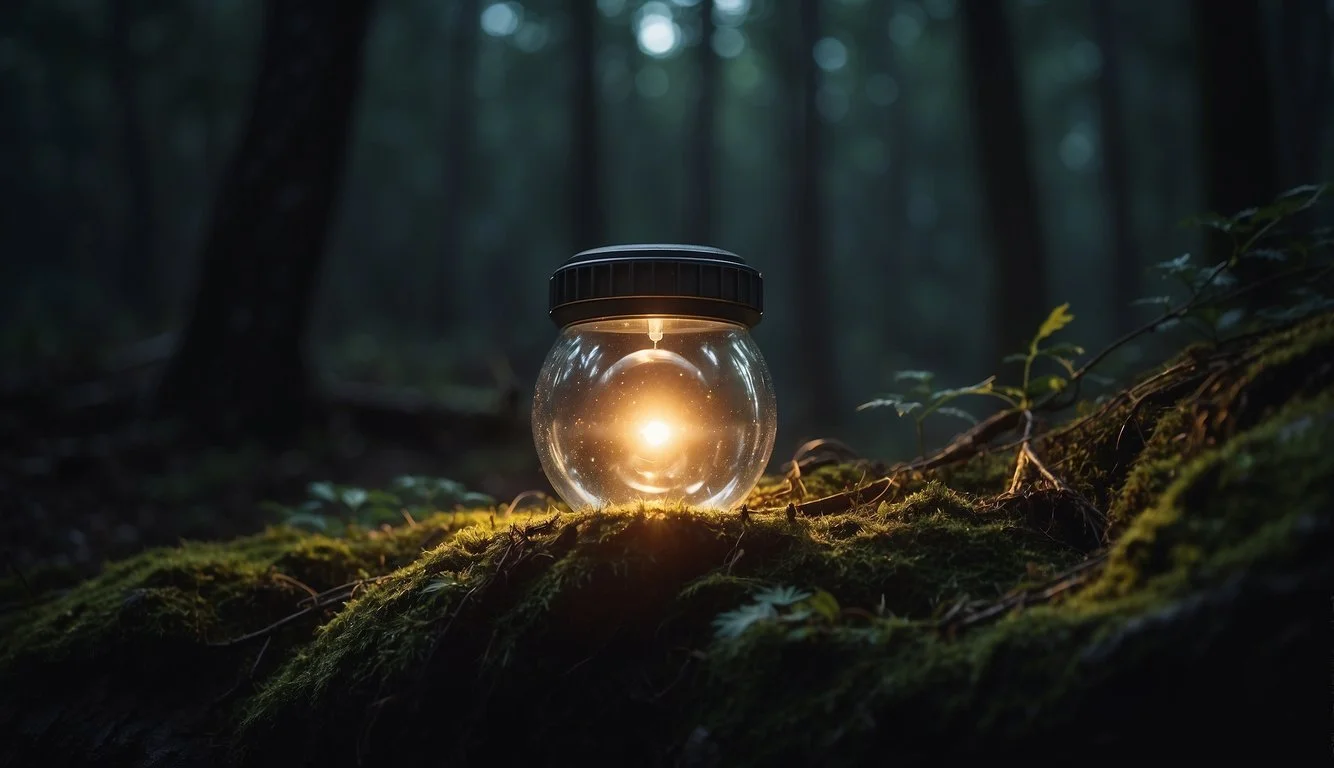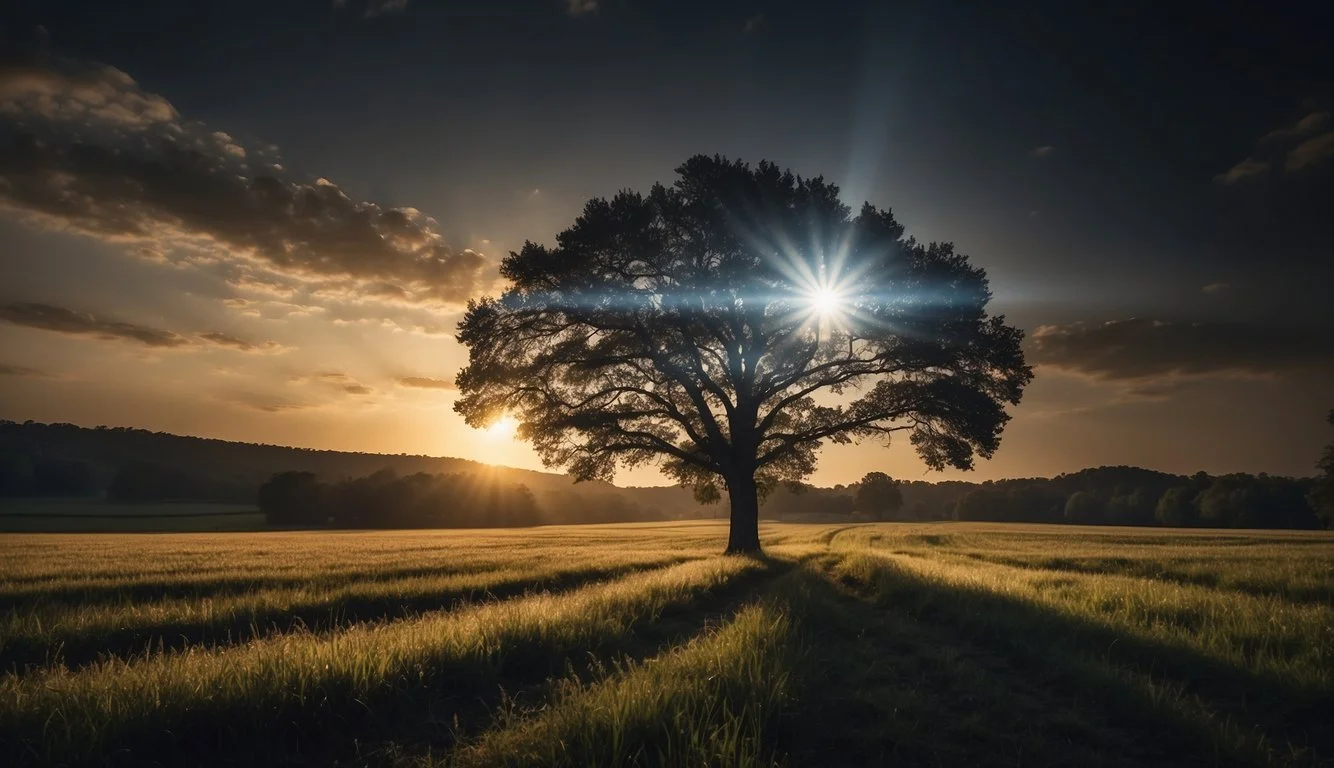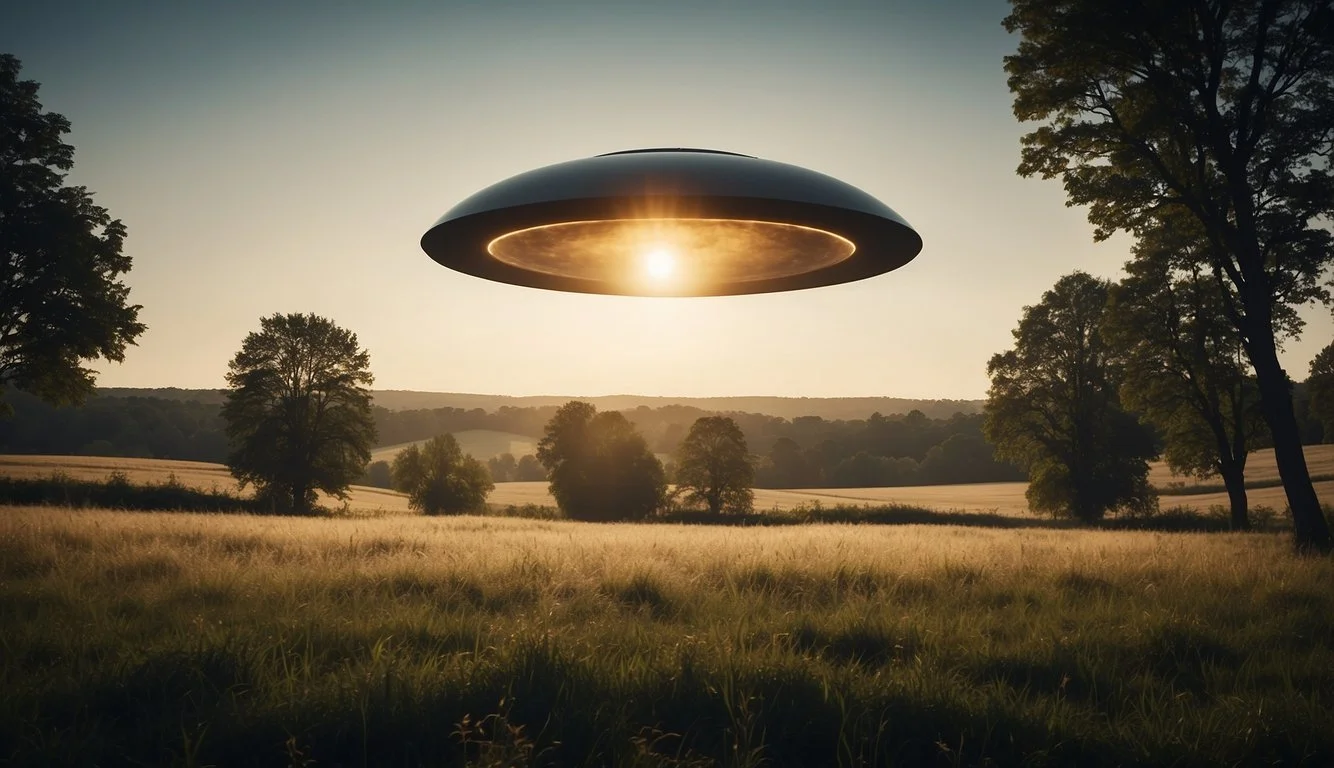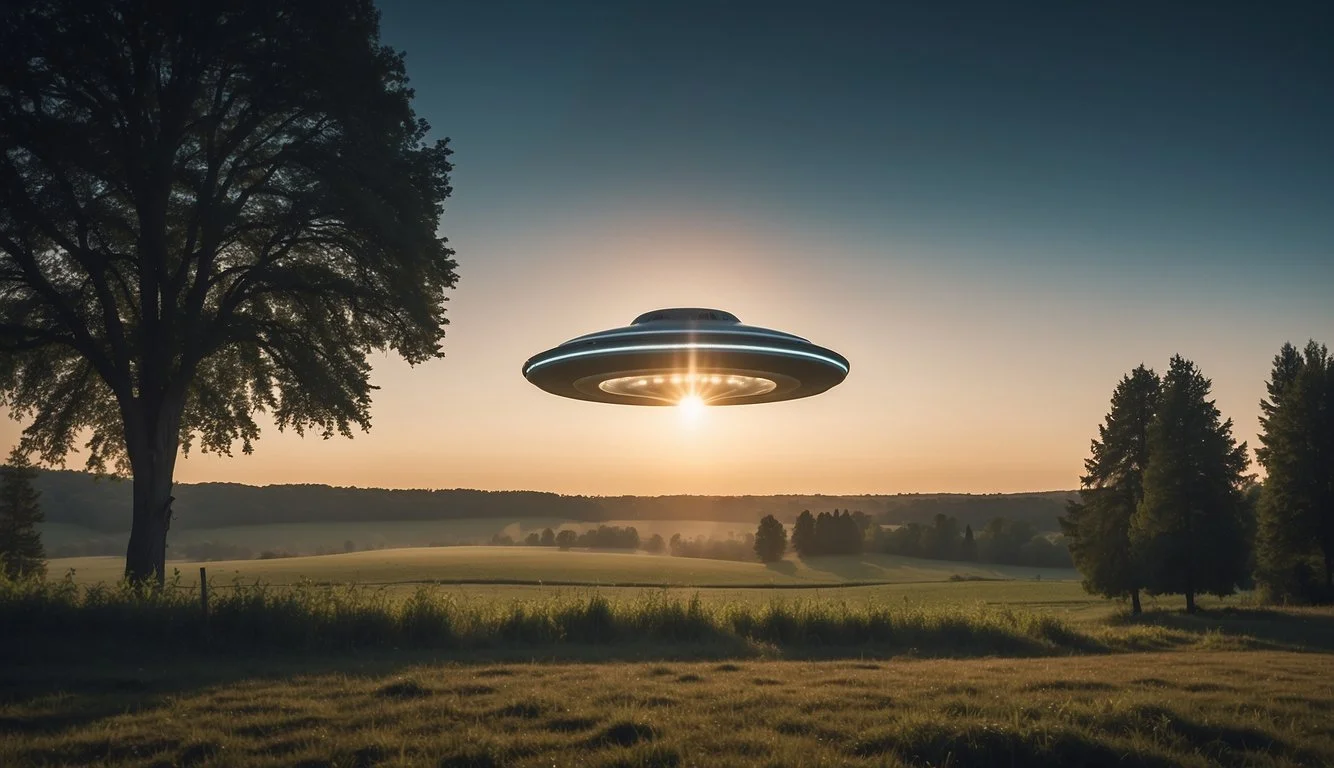Close Encounters: Personal UFO Stories from American Citizens - Eye Witness Accounts Unveiled
Unidentified Aerial Phenomena (UAP), commonly known as UFOs, have been the subject of American lore since the iconic Roswell incident of 1947. Initially stemming from a misunderstood air force balloon crash, the public's curiosity transformed into a nationwide phenomenon. The intrigue surrounding UFOs persists, with personal testimonies of unusual encounters contributing to a complex tapestry of beliefs and skepticism.
Personal encounters with unexplained aerial phenomena have woven themselves into the fabric of American storytelling, with individuals from every state sharing experiences that defy conventional explanations. These accounts range from fleeting glimpses of strange light patterns in the night sky to full narratives involving lost time and detailed recollections of extraordinary craft and beings. Each story reflects a part of the cultural zeitgeist that spans fear, wonder, and the quest for understanding what may lie beyond our current scientific grasp.
While the majority of UFO sightings can be attributed to natural or man-made causes, a subset remains unexplained, prompting both public and governmental interest. The formation of the National UFO Reporting Center indicates a level of legitimization of the phenomena, allowing citizens to report their encounters in an official capacity. These persistent tales of close encounters maintain a compelling place in the conversation on extraterrestrial life and our understanding of the universe.
Historical Context
The examination of Unidentified Flying Object (UFO) narratives within American history reveals a consistent thread of encounters and government interest. This section explores the evolution of these encounters and the official responses that followed.
The Early Sightings Era
The fascination with UFOs in the United States surged in the late 1940s, particularly after the 1947 Roswell incident, which many regard as the hallmark of early UFO sightings. Citizen accounts of flying saucers became a phenomenon, capturing the national psyche. The government's initial reaction to these sightings was a mix of skepticism and concern over national security, leading to secretive investigations to ascertain the origins and implications of these seemingly otherworldly crafts.
Project Blue Book and Aftermath
From 1952 to 1969, the U.S. Air Force conducted Project Blue Book, a series of systematic studies of UFOs. The project compiled thousands of reports and aimed to determine if UFOs were a threat to national security and to scientifically analyze the data.
Concluded Cases: Over 12,000 sightings reported.
Identified: 701 remained "unidentified".
Government Stance: Publicly skeptical, privately concerned.
CIA Involvement: Investigations occasionally overlapped with CIA interests.
Post-Blue Book, public interest spawned various conspiracy theories about the government's true knowledge of extraterrestrial life. While the military officially distanced itself from UFO inquiries following Project Blue Book, sightings continued to be reported by civilians and the military alike, often discreetly investigated but rarely acknowledged.
Encounters and Evidence
Throughout the years, American civilians and military personnel have reported encounters with unidentified aerial phenomena (UAPs). These encounters are often supported by various forms of evidence, ranging from personal testimonies to government documentation.
Civilian Narratives
Civilians have reported sightings and encounters with UAPs, with detailed narratives of these events. In 1969, a weekend trip to Boulder, Colorado ended unusually for an Air Force member who described a strange darkening of his room, followed by intense brightness. In another case, a civilian pilot in 1947 ignited a flurry of "flying saucer" sightings after an encounter in the Pacific Northwest. These stories often include physical descriptions or sensations, like abrupt adjustments in light, but rarely include credible photographic evidence.
Military Testimonies
The United States military has its fair share of encounters with UAPs. Navy pilots have gone on record describing their experiences with objects exhibiting extraordinary flight characteristics, which are not readily explainable by existing aircraft technology. Testimonies often detail the inability of radar to track these objects effectively, leading to congressional hearings where military personnel have provided firsthand accounts.
Congressional Hearings on UAPs:
Date: July 26, 2023
Focus: Firsthand military accounts
Relevance: Military encounters with UAPs
Government Documentation
Government agencies have intermittently documented UAP encounters. The Pentagon, in particular, has investigated numerous accounts of UAPs, some of which have involved close proximity to military installations. Notably, documentation and study intensified after events, like a U.S. Air Force balloon crash near Roswell in 1947, which often get conflated with theories of alien contact. In recent developments, the Pentagon has declassified certain reports, providing an official recognition of UAPs, albeit without confirming extraterrestrial origins.
Key Government Documents:
Title: UAP Investigation Report
Agencies: Pentagon, U.S. Air Force
Content: Analysis of Flight Patterns, Radar Data, Pilot Encounters
Scientific and Psychological Perspectives
In exploring the narratives of close encounters with unidentified flying objects, it's essential to consider the scientific scrutiny these reports undergo, as well as how human perception plays a role in these experiences.
Analyzing the Phenomenon
Scientists approach reports of unidentified flying objects, or more recently termed unidentified aerial phenomena (UAP), with rigorous methodologies. They evaluate evidence and rule out identifiable sources, such as aircraft, natural atmospheric phenomena, or man-made objects. When witnesses describe a mysterious ball of light, for example, scientists might investigate natural explanations like ball lightning or radiobr phenomena—electromagnetic fields generated by certain atmospheric conditions.
Physical Evidence:
Debris or material samples
Photographs or videos
Radar data or pilot reports
Potential Explanations:
Astronomical events (e.g., meteorites)
Atmospheric effects (e.g., radiobr flashes)
Man-made objects (e.g., satellites or drones)
Psychology of Perception
The psychology behind UFO sightings suggests that human perception and cognitive biases can lead to misinterpretations of visual stimuli, especially when conditions are ambiguous or poorly understood. Psychologists analyze how the brain processes information and why individuals might perceive an ordinary object as something extraordinary under stress or low-visibility conditions.
Factors Influencing Perception:
Lighting and visibility conditions
Psychological state (e.g., stress or excitement)
Expectations and cultural influences
The power of suggestion and emotional states can turn explainable sights—like a ball of light from a distant aircraft—into personal accounts of the supernatural. When analyzing accounts of close encounters, these psychological elements are as crucial as the scientific evaluation of the evidence presented.
Close Encounters and Abductions
Within the realm of Ufology, close encounters and abductions are significant for their deeply personal and frequently disturbing nature. These experiences often leave a lasting impact on those involved, bringing them into a peculiar fold of American folklore.
Firsthand Accounts
Sheila Young, a preschool carer from rural Montana, recounts her alleged abduction as "the most horrific experience" of her life. The Montana encounters not only involve Sheila but also her family, suggesting a multiperson abduction event. Equally compelling is the case of Betty and Barney Hill, a couple who in 1961, experienced a bewildering loss of time on a New Hampshire highway. Their tale became one of the first widely-publicized claims of alien abduction, setting a precedent for similar narratives.
In 1997, the Phoenix Lights were observed by many, described as dramatic and striking. Although not an abduction, this experience, where bright lights were seen over Arizona, highlighted how mass sightings can still involve personal experiences of the unexplained, often encapsulating a community in the phenomena.
Investigative Hypnosis
Investigative hypnosis has been employed in an attempt to recall details of alien encounters that may be suppressed or forgotten. The Hill abduction, for example, involved sessions of hypnosis, revealing more about their purported interactions with extraterrestrials. These accounts have contributed to the archetype of alien abductions including medical examinations and communication with non-human entities, solidifying the narrative of close encounters of the third kind in popular culture.
Hypnotic regression has been a pivotal tool for many individuals reclaiming lost time or fragmented memories of their experiences. However, the reliability of these hypnotically retrieved memories is often a subject of debate among professionals.
Government Transparency and Public Policy
In the realm of UFO phenomena, a significant shift towards greater transparency has been noted in recent years, driven by government action and public policy reforms. This has included the involvement of key government entities like the CIA and concerted legislative efforts.
The Role of the CIA
Transparency Initiatives: The CIA has historically maintained a level of secrecy surrounding UFO sightings and investigations. However, with growing public interest and pressure, it has been more forthcoming with declassified documents. These documents provide insights into the agency’s involvement in tracking and analyzing aerial phenomena.
Public Engagement: While the agency's exact contributions remain partially obscured, it has taken steps to address public curiosity. A notable instance is its provision of guides on how to investigate a UFO sighting, reflecting a more open stance.
Legislative Efforts for Disclosure
Congressional Actions: Congress has taken proactive measures to peel back layers of secrecy. A pivotal moment was the 2021 release of a report by the Office of the Director of National Intelligence, which, while not confirming extraterrestrial activity, signaled a new era of accountability.
Legislation Overview:
Transparency Bills: Legislation passed by Congress has mandated increased transparency concerning unidentified aerial phenomena (UAP), often referring to it as a matter of national security.
Hearings and Committees: Congressional hearings have been convened with defense and intelligence personnel to discuss sightings, with government officials providing testimony on UAP encounters.
In these initiatives, media outlets like The New York Times have played a crucial role by reporting on leaks and official releases, thus bringing the subject into mainstream discourse and prompting government bodies to take clear stances on the matter. The evolving policy landscape underscores the government's commitment to addressing citizen concerns over UAPs transparently and methodically.
Cultural and Social Influence
The fascination with UFOs, or Unidentified Aerial Phenomena (UAPs) as they are now termed, has deeply affected American culture and society, shaping the media representation and public perception of extraterrestrial life.
Media Representation
In American media, UFOs—often dubbed as flying saucers or little green men—have been a mainstay of science fiction and conspiracy theories. The portrayal of alien encounters shapes public understanding and curiosity. Television networks and social media platforms, notably Facebook, have communities dedicated to sharing personal experiences and theories about alleged extraterrestrial interactions. The influence extends into mainstream entertainment, with blockbuster films and documentaries presenting various narratives ranging from benevolent aliens to invasive species, either reinforcing stereotypes or challenging preconceived notions.
Public Perception
Public perception of UFOs and aliens ranges from staunch skepticism to firm belief in extraterrestrial visitation. High-profile cases, such as the Roswell incident of 1947, have spurred theories of military cover-ups and conspiracy theories suggesting the government possesses alien technology. Surveys indicate a significant portion of American citizens believe in the existence of aliens and that governments are concealing truths about extraterrestrial life. Moreover, testimonies from credible sources, like military personnel and pilots, contribute to the public's intrigue and demand for transparency regarding UAPs.
Advancements in UAP Research
Recent research has shed new light on unidentified aerial phenomena (UAPs), with substantial progress made in the areas of technology and investigative approaches.
Technological Progress
The study of UAPs has benefited greatly from technological advancements. The U.S. Navy, for instance, has implemented sophisticated tracking systems that provide more reliable data than ever before. These systems capture high-definition video and radar evidence which can be analyzed using advanced analytics. The New York Times has reported instances where Navy pilots have encountered UAPs, which were recorded and scrutinized using this new technology.
Experts like Dr. Bruce — a fictional placeholder for subject authorities — highlight how modern sensors and artificial intelligence algorithms contribute to differentiating between UAPs and identifiable objects. Historians and scientists consider these advancements crucial for an accurate understanding of such phenomena.
Opening New Avenues
The exploration of the universe and the quest to understand UAPs have led to new research avenues. Agencies have begun to actively recruit experts to study UAPs; for example, NASA appointed a new UAP research chief as recent as September 2023. These roles involve the exploration of UAP sightings reports, consolidation of facts, and transparent communication with the public.
Emphasis is placed on the scientific investigation of UAP sightings to potentially rule out or confirm explanations, including those involving extra-terrestrials. The inter-disciplinary approach combines physics, atmospheric science, and aeronautics, fostering a broad investigation not limited to extraterrestrial hypotheses.
Global UFO Incidents
UFO sightings have been reported globally, often involving military personnel from various countries. Such incidents usually feature unidentified craft with capabilities beyond conventional aircraft. Notably, The New York Times has reported on the U.S. Navy's encounters with unexplained aerial phenomena, formerly termed UFOs, showcasing the seriousness with which these incidents are considered.
Notable Sightings:
The 2004 USS Nimitz Encounter: U.S. Navy pilots recorded an object with no visible means of propulsion, moving in ways that defy known aerodynamics.
2007-2021 Pentagon Studies: Over 144 military-reported incidents have been studied, including some that remain unexplained even after rigorous analysis.
Military Responses:
US Air Force and Navy involvement: The Air Force has historically engaged with UFO-related inquiries and the Navy now takes steps to formalize the reporting process for pilots witnessing unexplained phenomena.
Declassified Documents: Governments are declassifying information, indicating a shift towards transparency regarding aerial anomalies.
Public Engagement:
Increased numbers of reported sightings have sparked civilian interest and speculation, with some reports capturing objects on video from airplanes or by individuals from the ground.
Reports of UFOs and UAPs (Unidentified Aerial Phenomena) continue to pique the interest of both the public and military organizations worldwide. Conversations and investigations into these reports persist, aiming to determine whether these sightings represent foreign adversaries' advanced technology, natural atmospheric phenomena, or something else entirely.
Conclusion
The subject of UFOs has long intrigued the American public, spawning countless tales and theories. Community testimonies, such as the account from Devil's Den or the widespread Phoenix Lights sighting, highlight the profound effect these experiences have on individuals. While the transparency surrounding such incidents has historically been shrouded, recent shifts in official attitudes are remarkable.
National security concerns have catalyzed a change in stance, with the military and government entities now taking reports more seriously. The establishment of reporting mechanisms by the Navy showcases a commitment to addressing what were once dismissed phenomena.
It is imperative to approach the UFO discourse with a balanced view. While not all claims of UFO encounters can be substantiated, the increase in reports and the attention from official agencies suggest that these encounters deserve scientific and investigative scrutiny. Sightings logged by credible witnesses prompt an acknowledgment that there remains much to be understood.
In summary, the collective fascination with UFOs is more than a cultural phenomenon—it reflects a universal quest for understanding and an innate curiosity about the unknown. The journey toward clarity is ongoing, as efforts intensify to distinguish between explainable events and true anomalies.


